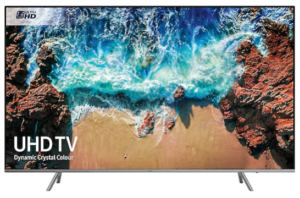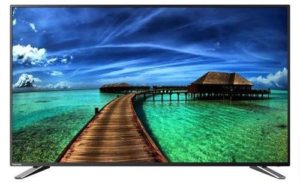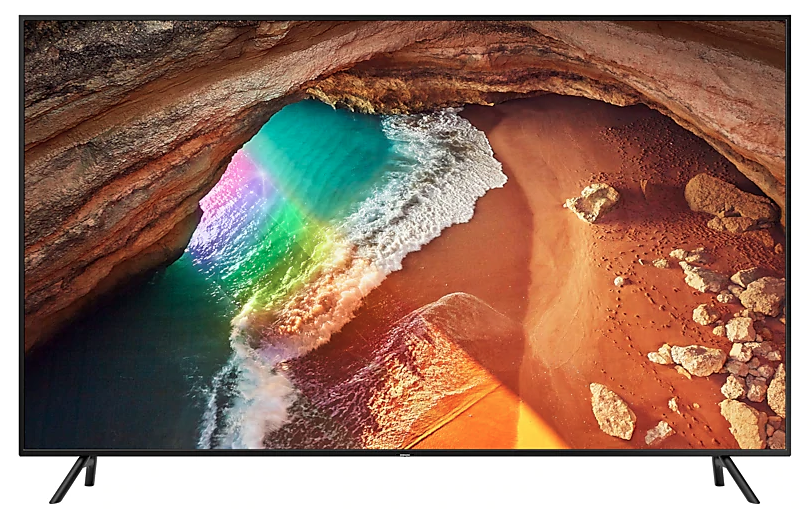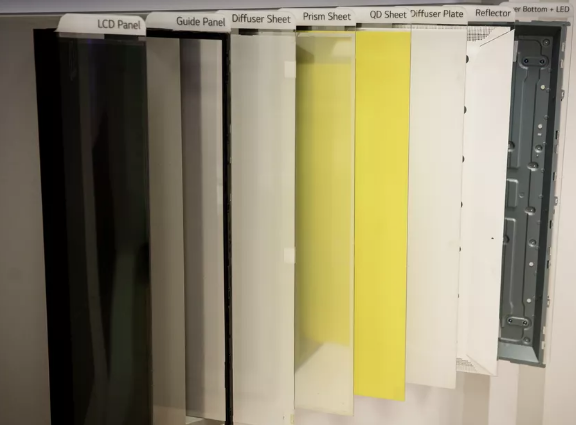
You have no doubt heard all about
4K, Ultra HD, or UHD televisions over the course of the last few years. The first 4K Television, the Sharp LC-70UD1U, was released in June of 2013; the market has grown and evolved heavily since, and this resolution has undoubtedly become the dominant trait sought in TVs. Despite this, you might be wondering: why would I want a 4K TV? Is the difference
really noticeable? Why should I upgrade? I'm here to break down exactly what 4K TVs are, what makes them special, and why the upgrade could make a difference for you.
4K: Explained
Aptly-named, 4K TVs are referred to as such due to their image width. This is similar to 1080p, although 1080p is actually named for the image's height. Specifically, 1080p televisions have a pixel height of 1,080 and a width of 1,920; 4K televisions are named for their pixel width of 3,840 (their height is 2,160 pixels). While not
exactly 4,000, it is close, and "4K" is undoubtedly a more attractive name than "thirty-eight forty". It's not really a mystery as to why they chose to swap from height to width as their naming metric, as 4K sure does sound more impressive than 2K. It also better illustrates the real change in pixel density that can be seen in 4K displays.
While the length and width of 4K displays do sound as though they are twice that of 1080p, that's actually not exactly true- they have four times the number of pixels. An example of this might be that of a 40 inch 1080p display versus a 160 inch 4K display. In theory, you would have a picture of approximately the same quality as the 1080p display's. If you go past that size, it is slightly worse, if you go smaller it is slightly better- you get the idea. Basically, 4K displays are
objectively better if you are buying a large television.
The Real Difference
You might have noticed that some larger 1080p displays have a lovely picture from afar, but when viewed more closely are far from clear. The increased pixel density (PPI, or pixels-per-inch) of a 4K display reduces this problem, cramming four times the number of pixels into the same space. This might sound odd to you, but I will explain why it is not twice as dense but instead four times:
If there are 1920x1080 pixels in an HD TV, and 2160x3840 in a 4K one, [1920 x 2 = 3840], and [1080 x 2 = 2160]. In this case, the display is 2160 pixels high (twice the height of HD) and the width is 3840 pixels wide (twice the width), and [2 x 2] (length x width) is four times the pixel density.
[caption id="attachment_1449" align="alignright" width="300"]

Image courtesy of 4K.com.[/caption]
This allows for larger televisions and better viewing angles/distances than what could be achieved with 1080p displays. Fear not if you can only afford a cheaper, smaller television. Even on smaller displays, the image quality is much higher as there are four times as many pixels outputting the same image.
Now, you might also be wondering what the difference between 4K and "UHD", or "Ultra High Definition" are. The answer is that, for consumer products, there is no difference. 4K traditionally referred to the standard pixel resolution found in cinemas (4096x2160) due to the resolution of cameras used to shoot movies. Due to this, some companies choose to avoid referring to their own products as "4K", instead labeling them as "UHD". In reality, among consumer products these are going to be the same resolution every time, so worry not about purchasing a UHD TV versus a 4K one; the difference is entirely semantic.
Why Make the Move to Ultra HD?
While all of this might be interesting, it probably does not explain
why you should purchase a 4K or UHD television. While perhaps a less shocking difference than when you first moved from an old SD television to a shiny new 1080p HD one, the 4K/UHD difference is extremely noticeable. With four times the pixel density of HD televisions, images become substantially clearer. Colors are more vibrant, "black" is no longer a single shade but, instead, is a spectrum, and images become wildly engrossing as a result. Then there is of course the aforementioned viewing angles and distances, which make images seem much more consistent than what can be found on standard HD TVs.
Of course, there is also the fact that the entertainment industry has embraced 4K and UHD content, indicating that it is here to stay unlike some other technologies of the past. A 4K television is an investment, one which will pay off the very first time you sit down and experience your favorite film in Ultra HD glory. There is a certain beauty which becomes clear when one first views a 4K television in person for the first time, a realization of what the future of visual media could be. Does 4K make a difference? It absolutely does, and is arguably the most significant change in television technology in the last decade.
Interested in
purchasing a 4K/UHD/Ultra HD television? Want a multisystem one, so that you can use it anywhere in the world?
220-Electronics has an incredible selection of them, ready to go for you at prices that other companies cannot hope to beat. Not sure what you're looking for? Moving to another country?
Contact our support and we will walk you through the details, step-by-step.
-The 220-Electronics Team


 Samsung UA82NU8000 Features
Samsung UA82NU8000 Features



 An image showing the 'sandwich' of panels in an LCD TV screen. Source: https://www.cnet.com/news/qled-vs-oled-samsung-tv-and-lg-tv-2019-comparison/[/caption]
An image showing the 'sandwich' of panels in an LCD TV screen. Source: https://www.cnet.com/news/qled-vs-oled-samsung-tv-and-lg-tv-2019-comparison/[/caption]
 You have no doubt heard all about 4K, Ultra HD, or UHD televisions over the course of the last few years. The first 4K Television, the Sharp LC-70UD1U, was released in June of 2013; the market has grown and evolved heavily since, and this resolution has undoubtedly become the dominant trait sought in TVs. Despite this, you might be wondering: why would I want a 4K TV? Is the difference really noticeable? Why should I upgrade? I'm here to break down exactly what 4K TVs are, what makes them special, and why the upgrade could make a difference for you.
You have no doubt heard all about 4K, Ultra HD, or UHD televisions over the course of the last few years. The first 4K Television, the Sharp LC-70UD1U, was released in June of 2013; the market has grown and evolved heavily since, and this resolution has undoubtedly become the dominant trait sought in TVs. Despite this, you might be wondering: why would I want a 4K TV? Is the difference really noticeable? Why should I upgrade? I'm here to break down exactly what 4K TVs are, what makes them special, and why the upgrade could make a difference for you.
 Image courtesy of 4K.com.[/caption]
This allows for larger televisions and better viewing angles/distances than what could be achieved with 1080p displays. Fear not if you can only afford a cheaper, smaller television. Even on smaller displays, the image quality is much higher as there are four times as many pixels outputting the same image.
Now, you might also be wondering what the difference between 4K and "UHD", or "Ultra High Definition" are. The answer is that, for consumer products, there is no difference. 4K traditionally referred to the standard pixel resolution found in cinemas (4096x2160) due to the resolution of cameras used to shoot movies. Due to this, some companies choose to avoid referring to their own products as "4K", instead labeling them as "UHD". In reality, among consumer products these are going to be the same resolution every time, so worry not about purchasing a UHD TV versus a 4K one; the difference is entirely semantic.
Image courtesy of 4K.com.[/caption]
This allows for larger televisions and better viewing angles/distances than what could be achieved with 1080p displays. Fear not if you can only afford a cheaper, smaller television. Even on smaller displays, the image quality is much higher as there are four times as many pixels outputting the same image.
Now, you might also be wondering what the difference between 4K and "UHD", or "Ultra High Definition" are. The answer is that, for consumer products, there is no difference. 4K traditionally referred to the standard pixel resolution found in cinemas (4096x2160) due to the resolution of cameras used to shoot movies. Due to this, some companies choose to avoid referring to their own products as "4K", instead labeling them as "UHD". In reality, among consumer products these are going to be the same resolution every time, so worry not about purchasing a UHD TV versus a 4K one; the difference is entirely semantic.
 When TV was first designed, there was a set of standards used to control how the information was sent from the broadcasting station to the TV, and how the TV interpreted this information into a picture on the TV screen. In North America, this standard is known as NTSC which stands for National Television Systems Committee. There are also two other types of standards used around the world; PAL (Phase Altering Line) and SECAM (Sequential Color with Memory).
The systems used vary by country and/or region, but they all use one of the three standards: PAL, NTSC, or Secam. Digital cable, VHS, DVD, and Blu-ray also adhere to these color information standards. PAL TVs are only compatible with a PAL signal or other Pal components. The same is true for NTSC and SECAM. It's not possible to use a PAL TV with a NTSC Blu-ray Player or vice-versa. If you wanted to use your NTSC player to watch movies on a PAL or SECAM TV, you'd need to use an external video converter. Let's take a look at the differences betwen these three systems.
When TV was first designed, there was a set of standards used to control how the information was sent from the broadcasting station to the TV, and how the TV interpreted this information into a picture on the TV screen. In North America, this standard is known as NTSC which stands for National Television Systems Committee. There are also two other types of standards used around the world; PAL (Phase Altering Line) and SECAM (Sequential Color with Memory).
The systems used vary by country and/or region, but they all use one of the three standards: PAL, NTSC, or Secam. Digital cable, VHS, DVD, and Blu-ray also adhere to these color information standards. PAL TVs are only compatible with a PAL signal or other Pal components. The same is true for NTSC and SECAM. It's not possible to use a PAL TV with a NTSC Blu-ray Player or vice-versa. If you wanted to use your NTSC player to watch movies on a PAL or SECAM TV, you'd need to use an external video converter. Let's take a look at the differences betwen these three systems.